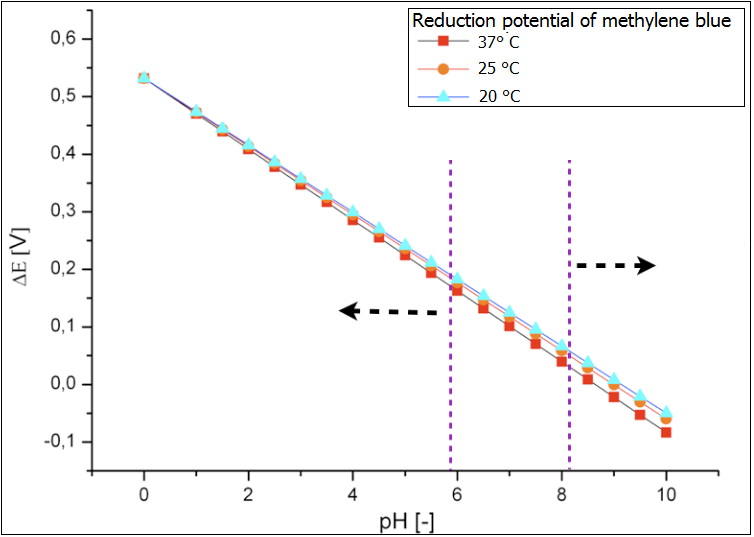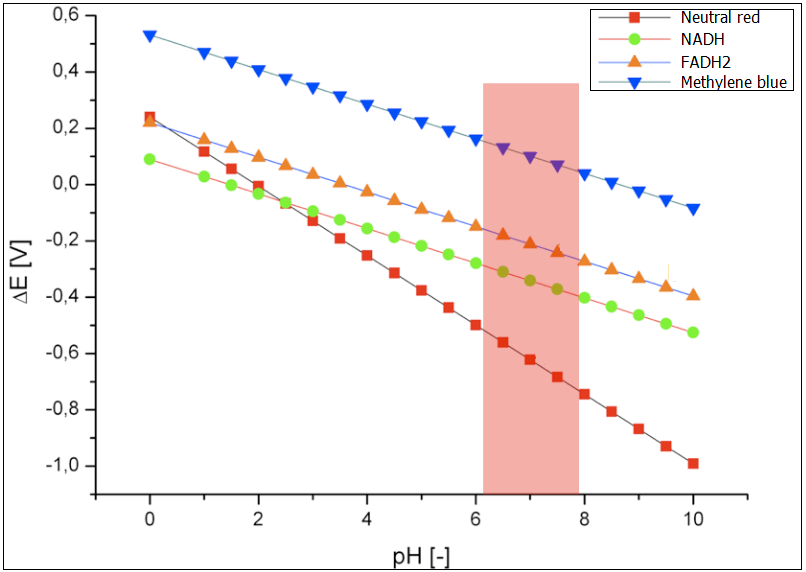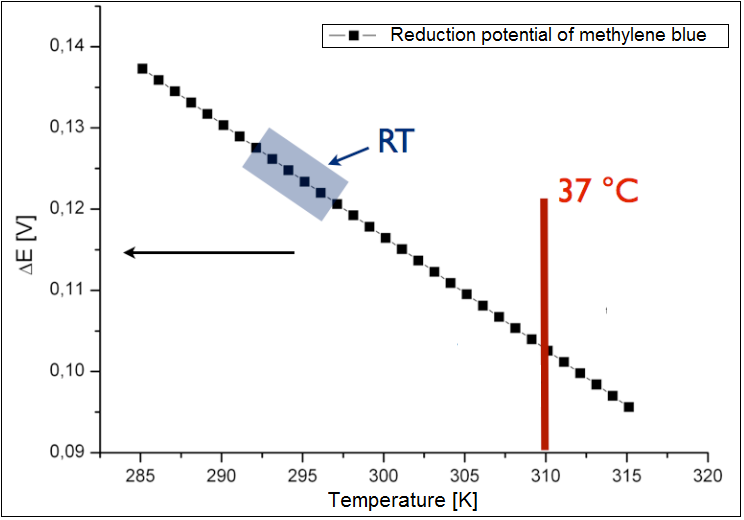Team:Bielefeld-Germany/Modelling/Optimal
From 2013.igem.org
m |
m |
||
| Line 91: | Line 91: | ||
=='''Optimal temperature '''== | =='''Optimal temperature '''== | ||
<p align="justify"> | <p align="justify"> | ||
| + | The analysis was conducted only for an exogenous mediator methylene blue. The results have been shown in the figure 3 below. It could be shown, that the calculated reduction potentials differs only slightly for the broad spectrum of the temperature, and lies at about 0.1 V. Therefor the temperature is not the limiting parameter for the performance of the fuel cell. The charge at the optimal growth condition for E. coli (37 °C or 310 K) is ~0.13 . | ||
</p> | </p> | ||
<br> | <br> | ||
| - | [[Image:Bielefeld-germany-model-optimal-temp.png|500px|thumb|center|'''Figure 3:''' | + | [[Image:Bielefeld-germany-model-optimal-temp.png|500px|thumb|center|'''Figure 3:''' Calculated reduction potential of the methylene blue dependent on the temperature of the system]] |
<br><br><br><br><br><br><br><br> | <br><br><br><br><br><br><br><br> | ||
Revision as of 22:49, 4 October 2013
Modeling
Overview
The microbial fuel cell will be subjected to numerous parameters, which will heavily influence its performance. Therefore, there is a need to inquiry the impact of those parameters on the efficiency of the system. In our approach we focused on how the reduction potential of the given mediators depends on two most significant parameters, namely the pH value and the temperature. All values were calculated based on the Nernst equation, which describes the relation between the electromotive force of the full cell and the temperature or the pH-value.
Optimal pH value
Optimal temperature
The analysis was conducted only for an exogenous mediator methylene blue. The results have been shown in the figure 3 below. It could be shown, that the calculated reduction potentials differs only slightly for the broad spectrum of the temperature, and lies at about 0.1 V. Therefor the temperature is not the limiting parameter for the performance of the fuel cell. The charge at the optimal growth condition for E. coli (37 °C or 310 K) is ~0.13 .
References
 "
"



